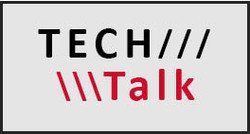 By David Moore, BCE
By David Moore, BCE
The bar for the pest management industry is constantly being pushed higher and higher, and documentation is one of those areas where there is little room for error. The conditions we report to our clients are scrutinized and hold both us and them accountable for what we document. This is especially true in third-party audited facilities where the pest management portion is a small, but critical, portion of the assessment. Whether to protect yourself or give your client a clear understanding of a condition that you need resolved, detailed documentation of conducive conditions is essential on every service report.
There are generally three categories conditions fall under: sanitation, structural and cultural (sometimes referred to as behavioral). Sanitation conditions include opportunities that affect the cleanliness and hygiene of a facility. Structural conditions are deficiencies in the construction or upkeep of the building itself that can allow a pest to enter a client’s location. Cultural conditions are the practices the staff does that can increase the likelihood of pests entering the facility (e.g., leaving doors open). These conditions should be relevant to the pest issue at hand and can be proactive or have an immediate impact on a current pest issue. The conditions that we document should help the client understand the area of concern and what needs to be resolved.
COMMUNICATION TIPS. Always demonstrate to the client that you care and need their cooperation to resolve the issue. If there is a current issue, explain to them how resolving a pest condition will accelerate their resolution. If they do not have a current issue, explain to them the value of being proactive and how it will positively impact their business. Like many things in our industry, resolving pest conditions is a partnership that everyone has to own. In many cases, the customer does not understand how minor issues can impact their building’s pest pressure.
Avoid being aggressive or defensive when you tell the client what opportunities they have. Understand that the condition is probably impacting them more than you, and in some cases the condition is going to be tolerated due to operation restraints or budget concerns. When reporting the conditions, be as detailed as possible without adding emotion to the description. If the client is not resolving an issue, don’t add inflammatory language to the condition. This will only irritate the client, reduce cooperation and possibly lead to a cancellation. Instead, simply put the word “repeat” next to it so it is clear that the issue has been ongoing.
Ensure you are using the same verbiage the client is using. If they are calling a loading dock a “landing pad,” then use the words “landing pad” when documenting the condition. The same rule holds for equipment as well. If you are using the client-specific terms, they will have a clearer understanding of what you are requesting and where to locate it.
When describing the condition, make it as detailed as possible. For example, don’t just say there are some FRP panels damaged in the kitchen at a grocery store. Describe exactly where the structural condition needs to be addressed: There is a hole in the FRP under the left side of the vegetable prep table in the prepared foods section of the kitchen. This gives the client a clear understanding of where to look, uses their verbiage, and they can give it to their maintenance personnel without having to devote more time to the request.
One thing that many people forget about is to readdress the condition. If the issue has been resolved, it should be removed from the service report. If it is still relevant, it should stay on the service report. If you remove the condition without it being resolved, you are essentially saying that it is a non-issue. Even if the client asks you to remove the condition, leave it if it is still relevant. This is important for liability, especially with the passing of the Food Safety Modernization Act.
Finally, never forget that from a client’s perspective, documentation is as much a part of the service as the pest control measures you take during the service. Tell the story of what you observed and did and you’ll be pleasantly surprised at the increased cooperation you receive as a result.
David Moore is a board certified entomologist who received his master’s degree in entomology from Virginia Tech. He serves as the manager of technical services for Dodson Bros. Exterminating.
This Tech Talk article was originally published in the March 2017 edition of PCT magazine.
